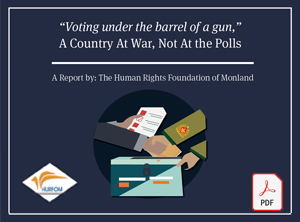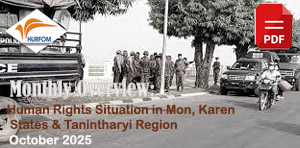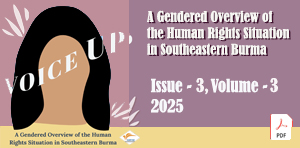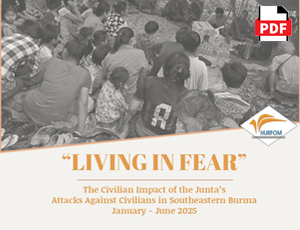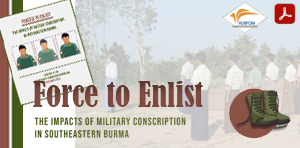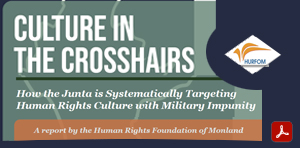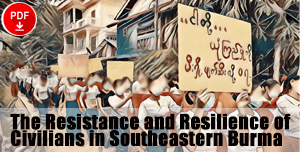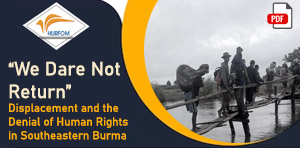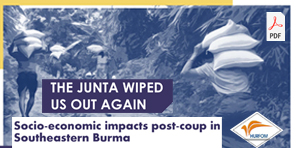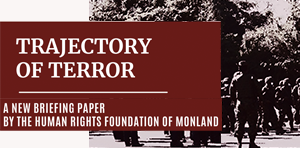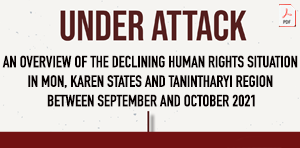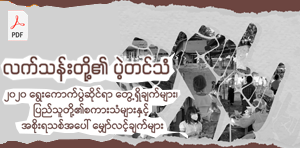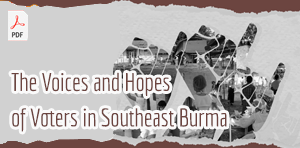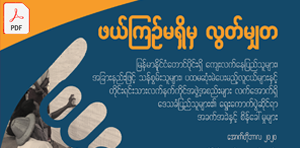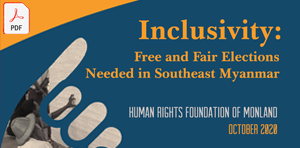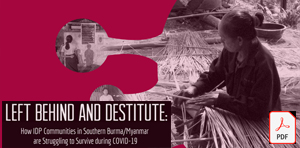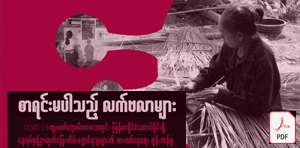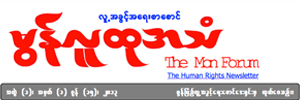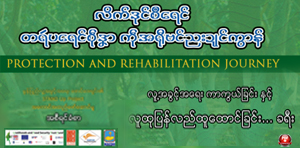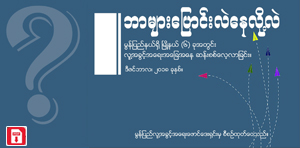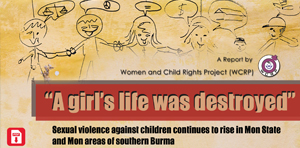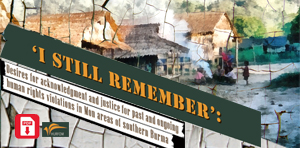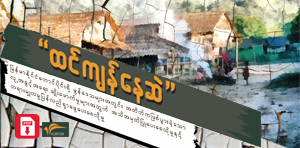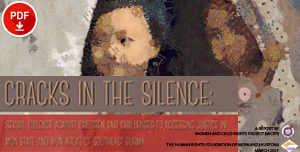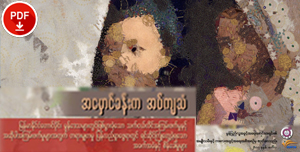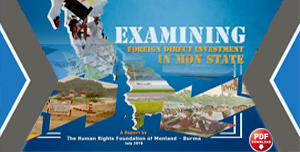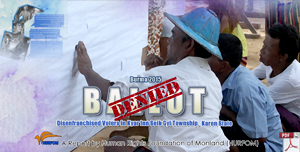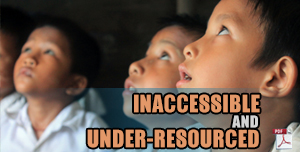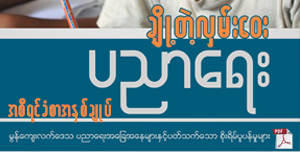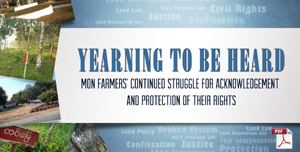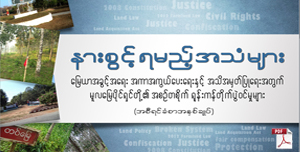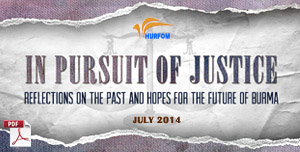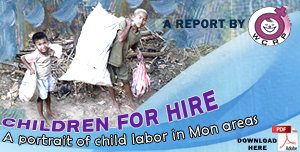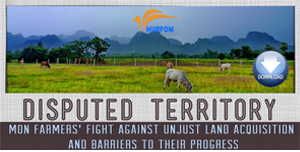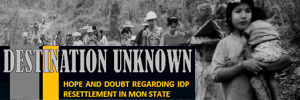A road runs through it: Accounts of abuse during strand road construction in Thanbyuzayat
June 26, 2009
INTRODUCTION
Along the coast of western Thanbyuzayat Township lies one of Burma’s most beautiful beaches. Besides the natural beauty of the coastline, the region is home to hundreds of farmers who are the heart of the local economy, cultivating long-term crops of rubber and fruit trees. However the strand road construction project, begun in January 2009, has been devastating to the structure of the local economy, costing local villagers an estimated 15 billion kyat (US$15 million) in damage to farms, and the project has precipitated hundreds of human rights abuses.![]() Download report as PDF [ 1.61MB]
Download report as PDF [ 1.61MB]
Read more
“I Will Never Go Back:” Human Rights Abuses in Mon State and Tenasserim Division
May 28, 2009
Nai Nyan, 55, resident of Paukpinkwin village.
Introduction
The Burmese military government has continued to face resistance from insurgent forces in the area of Sothern Mon State and Northern Tenasserim division. Violence has continued in the area despite a ceasefire signed in 1995 with the regional Mon ethnic leadership, the New Mon State Party (NMSP). In a 4 square mile area around Pukpinkwin village, Burmese army militarization has led to widespread human rights abuses such as seizure and destruction of civilian property, forced porter services and arbitrary execution. After the last 10 years of these abuses, HURFOM researchers have found that the region’s estimated 800 houses have dwindled, with only 150 to 170 still remaining. HURFOM’s research indicates that between January and March 2009 an estimated 70 to 80 families have fled to the Kyone Bine village in Tavoy district alone. These 4 square miles have been severely depopulated as human rights abuses have made the region increasingly uninhabitable. Read more
Power through gun barrels: Abuses related to the DKBA offensive in Dooplaya District
April 23, 2009
I. Summary
Since early October 2008, the current military junta and its ally, the Democratic Karen Buddhist Army (DKBA) have been mounting a major military offensive to crush the Karen National Union (KNU) and its armed wing, the Karen National Liberation Army (KNLA). During 1997 and 1998, most of Dooplaya district in central Karen State has been occupied and captured by the joint military offensives of the Burmese Army and DKBA troops. Since then, the military regime has changed its name from the State Law and Order Restoration Council (SLORC) to the State Peace and Development Council (SPDC). However, the oppression has not stopped and instead the occupation troops have continued to extend their control over the Karen villages which have been supporting the KNLA/KNU troops.
After the end of the rainy season last year, the DKBA boosted its military offensive and operations in Pa-an, Kawkareik and northeast Kyainnseikyi Townships with the support of SPDC military columns under the command of Light Infantry Battalions (LIBs) No. 545 and No 204. According to the records of HURFOM, armed clashes between the KNLA/KNU and DKBA (combined with the Burmese Army) occurred on least 46 occasions between January 1st and February 28th, 2009 in KNLA Brigade No. 6 and KNLA General Headquarters battalions areas which are situated in the Kawkareik and Pa-an Districts. Among them, at least 5 armed clashes involved only DKBA troops. Because of these ongoing armed clashes between the KNLA/KNU, DKBA and SPDC battalions, many ethnic Karen villagers have faced insecurity in their own villages and some have fled to safer areas. All armed forces involved in this ongoing armed conflict have been increasingly using landmines to restrict each other’s movements. To effectively launch military offensives and protect themselves, the DKBA forces have been using some villagers as human minesweepers. In this monthly report, HURFOM documents abuses in Kawkareik, Kyainnseikyi and Win Ye Townships in Dooplaya District from January to March 2009.
Download report as PDF [ 1.31MB] Read more
Economic predation: taxation, extortion and commandeering in Mon State
March 30, 2009
I. Introduction
The economic situation on Burma’s southern peninsula is demonstrative of the often spoke truisms about the interconnectedness of the globalized world economy. Though Burma’s foreign trade is limited by government mismanagement and international sanctions, it is still reliant on and impacted by changes in the international financial environment. Today in Mon State, the reduction in the international demand for rubber has lead to a plummet in the value of rubber. Similarly, a bumper paddy croup in Southeast Asia following last year’s international rice shortages has paddy at a fraction of its normal value. The precipitous decline in price of Mon State’s primary agricultural products is being matched by a decline in remittances as migrant workers earn less in now-struggling neighboring countries Thailand and Malaysia.
![]() Download report as PDF [ 1.25 MB] Read more
Download report as PDF [ 1.25 MB] Read more
Living on a one-way ticket: self-reliance in the Mon resettlement sites
February 26, 2009
I. Introduction
The primary armed group fighting in the name of Mon people agreed to a cease-fire in 1995. Though this ended armed hostilities between the group and Burma’s State Peace and Development (SPDC) government, human rights abuses committed against residents of Burma’s southern peninsula continue. This abuse, combined with a weak economic situation directly related to army abuses, has resulted in the movement of thousands of people whose homes are unsafe and/or economically untenable. Many of these people have, as one academic has said, “found their backs to Thailand” and have ended up in resettlement sites along the Thai-Burma border.
![]() Download report as PDF [ 1.59 MB] Read more
Download report as PDF [ 1.59 MB] Read more
Living between two fires: villager opinions on armed insurgency
January 29, 2009
I. Introduction
The mountains and thick jungle of the area between Mon State’s southern Ye Township and northern Yebyu District in northern Tenasserim Division make it an ideal staging ground for armed rebels. Burma’s State Peace and Development Council (SPDC) government’s desire to fully control the countryside – a desire strengthened by the proximity of gas pipelines – have lead to intense militarization of countryside as the government fights to pacify the area. The high concentration of SPDC battalions and the scorched earth tactics they employ in their operations against rebels means that the area is consistently the site of the worst human rights violations on Burma’s southern peninsula.
![]() Download report as PDF [ 1 MB]
Download report as PDF [ 1 MB]
Protecting their rice pots: an economic profile of trade and corruption in Three Pagodas Pass
December 22, 2008
I. Introduction
Control of the Three Pagodas Pass border crossing, which connects Burma’s Karen State to Thailand’s Kanchanaburi Province, has been actively contested for hundreds of years. Fighting was fierce and frequent through the 1990s, and disputes over the border’s exact demarcations persist. In the last decade, frequent border closures driven by conflict and politics have wreaked havoc on legal business in and through the pass. Today, many residents find themselves in dire economic circumstances, made worse by the global economic crisis.
![]() Download report as PDF [ 1.24 MB] Read more
Download report as PDF [ 1.24 MB] Read more
“I have no more left in my hands:” Human rights conditions in southern Ye Township and northern Tavoy District
November 20, 2008
I. Introduction
Burma’s southern peninsula, made up of Mon State and Tenasserim Division, is home to some of the country’s most lush jungle and difficult terrain. It has, consequently, become the natural staging area for the operations of a variety of armed rebel groups. Though the area, like much of Burma, saw a decline of armed resistance through the 1990s, it has not been brought under complete control. In the 1990s, the SPDC found extra motivation for its counter-insurgency efforts in the area: the Yadana gas fields, which produce significant volumes of natural gas, lie just offshore in the Andaman Sea. Two overland pipelines transport gas across the peninsula, with one running due east into Thailand and the other running north, through Mon State and into Karen State. Human rights violations surrounding the development of the Yadana gas project in the 1990s have been well documented, and violations continue as the SPDC works to maintain and expand control of the area.
![]() Download report as PDF [ 610 kb] Read more
Download report as PDF [ 610 kb] Read more
A silenced anniversary: one year after the Saffron Revolution
October 22, 2008
I. Introduction
 In August and September 2007 hundreds, then thousands, then tens of thousands of monks and civilians demonstrated in over twenty-five Burmese cities. The peaceful protests, dubbed the “Saffron Revolution” after the color of robes worn by monks who played a leading role, were Burma’s largest mass movement in two decades. Though the digital expertise of Burma’s dissident community ensured the events received international attention, the State Peace and Development Council (SPDC), Burma’s military government, reacted with overwhelming force. Unarmed protesters were beaten and shot. Thousands were detained and held in inhuman conditions. Some were tortured, others killed and arrests continued for months after. Read more
In August and September 2007 hundreds, then thousands, then tens of thousands of monks and civilians demonstrated in over twenty-five Burmese cities. The peaceful protests, dubbed the “Saffron Revolution” after the color of robes worn by monks who played a leading role, were Burma’s largest mass movement in two decades. Though the digital expertise of Burma’s dissident community ensured the events received international attention, the State Peace and Development Council (SPDC), Burma’s military government, reacted with overwhelming force. Unarmed protesters were beaten and shot. Thousands were detained and held in inhuman conditions. Some were tortured, others killed and arrests continued for months after. Read more
Without a choice: Increased economic migration from Mon State to Thailand
September 24, 2008
HURFOM:
I. Introduction
Thailand is home to an estimated 1.2 million migrant workers from Burma, though the percentage of this number made up of ethnic Mon has never been surveyed. If Mahachai, in southern Thailand, is any indicator, the number should be quite large, for the city is home to 400,000 Mon workers. The migration of workers from Mon state is not a constant stream, and is affected by a variety of factors. Though not strictly seasonal as can be, for instance, the movement of undocumented Latino agricultural workers in the United States, the number of workers crossing from Mon state is still affected by the seasons. Travel difficulties, as well as agricultural opportunities, associated with heavy rainfall mean that migration typically lulls during the rainy season, and rises through the cold and hot seasons until peaking during the forty-five day period following mid-April’s Songkran festival. Read more



